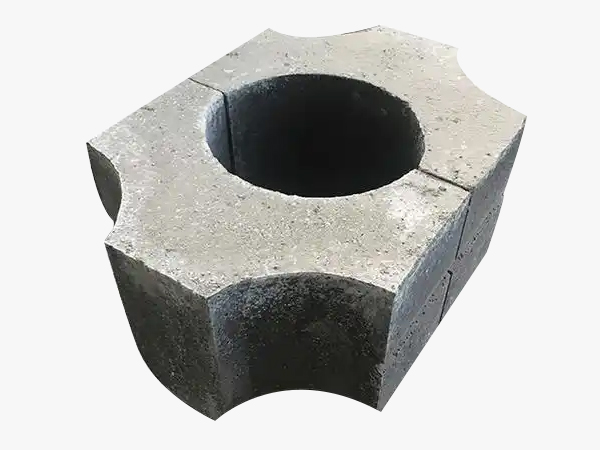Brief Introduction
Refractory precast shapes are also called refractory prefabricated bricks and refractory prefabricated blocks. They belong to the category of unshaped refractory materials. The ingredients are basically the same as those of unshaped materials, and they are unburned or lightly burned products.
● Material: clay, high alumina, corundum, silicon carbide and other materials.
● Molding method: vibration molding, vibration pressure molding and ramming molding.
● Size: The production process of each material is to produce prefabricated parts of different sizes according to customer needs.
Advantages Of Refractory Precast
● No need to cast on site; short construction period; low production cost.
● The steps of casting, curing, drying, etc. have been completed at the time of delivery.
● Construction can be free from restrictions such as environmental and seasonal conditions.
Techniacal Data
We can develop high, medium and low-grade refractory precast shapes based on the current different requirements from large, medium and small blast furnaces. Their physical and chemical indicators are as follows:
| Item | GCJ-70 | GCJ-65 | GCJ-55 | |
| Al2O3 | ≥% | 70 | 65 | 55 |
| SiC | % | 10-15 | 10-15 | 10-15 |
| F·C | % | 2.6 | 2.6 | 2.6 |
| Bulk Density ≥g/㎝3 | 110℃×24 | 2.85 | 2.75 | 2.65 |
| 1450℃×3 | 2.8 | 2.7 | 2.6 | |
| CCP, ≥MPa | 110℃×24 | 20 | 20 | 15 |
| 1350℃×3 | 80 | 60 | 40 | |
| CMOR ≥MPa | 110℃×24 | 6 | 4 | 4 |
| 1350℃×3 | 12 | 10 | 6 | |
| 1500℃×3 | 0-0.5 | 0-0.5 | 0-0.5 | |
Application
Refractory castable precast shapes are widely used in thermal equipment such as heating furnaces, electric furnace tops, steel spouts, and flame nozzles, and play a greater role.

